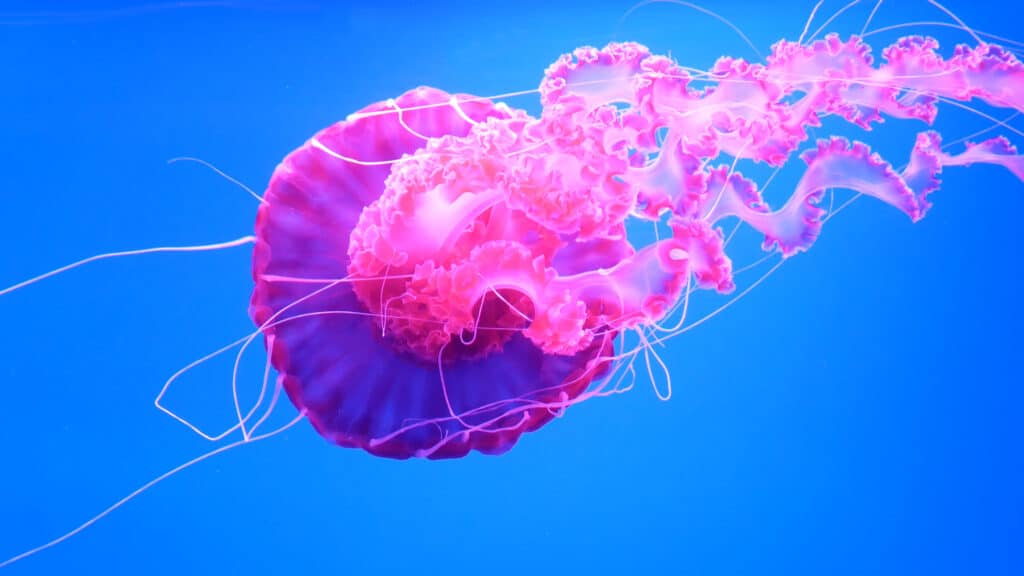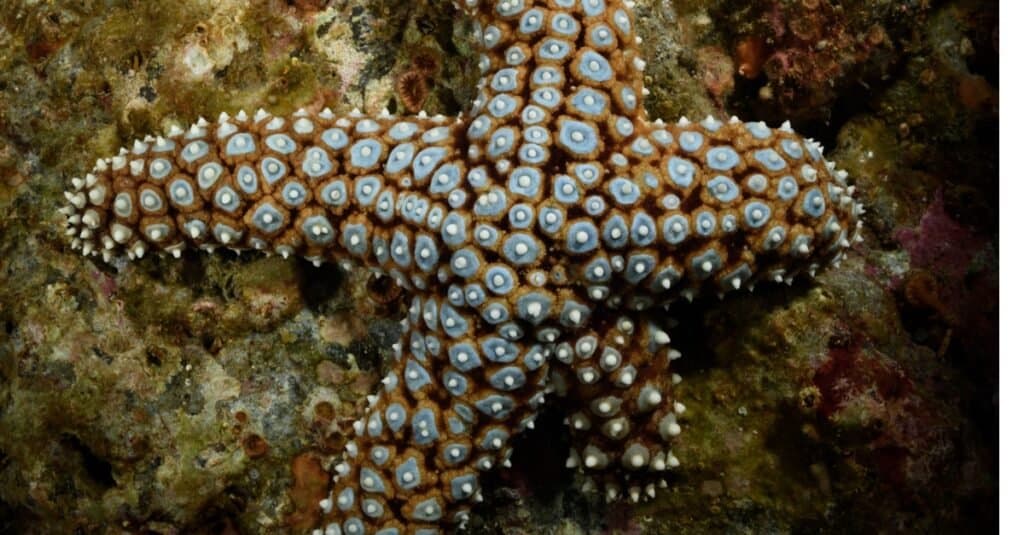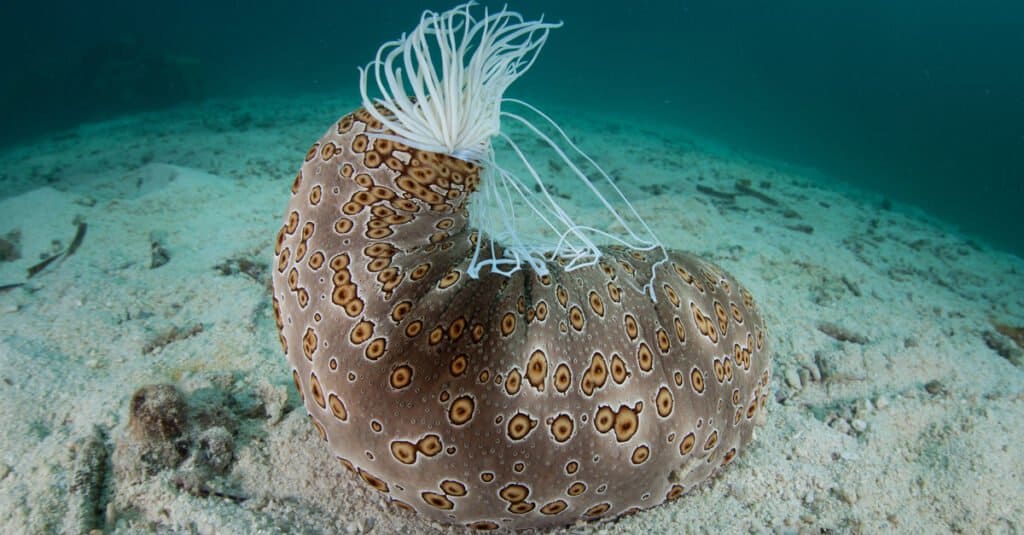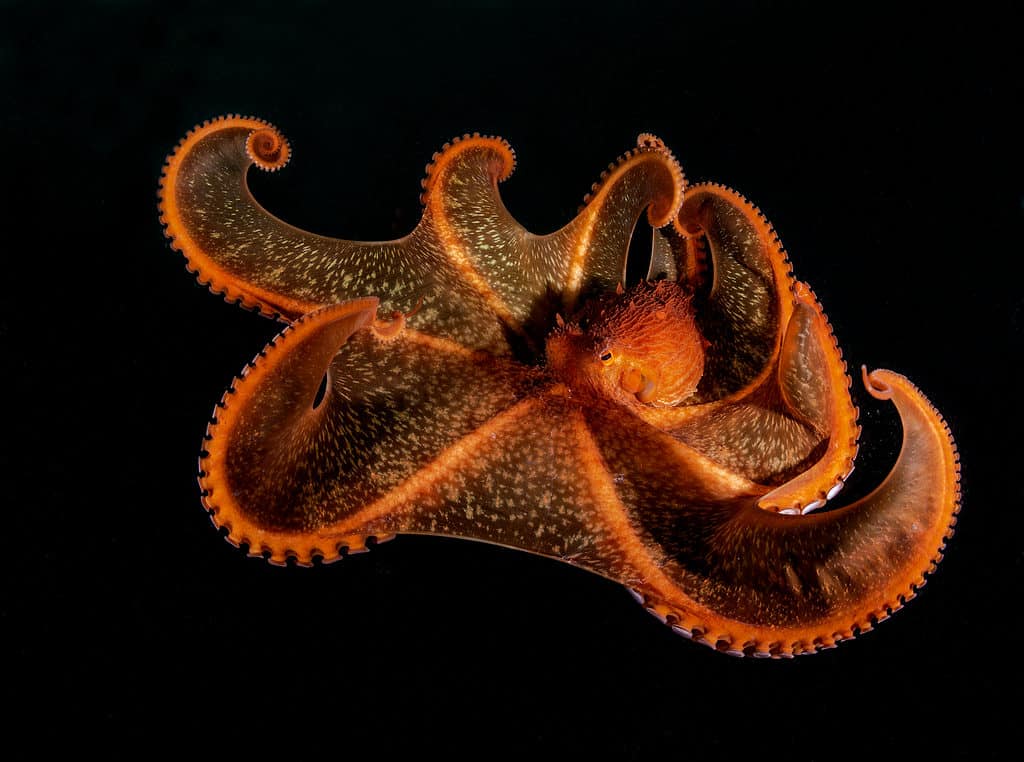Most of us know what symmetry is – a shape is symmetrical when it can be divided along a line or plane, and the two halves are congruent (identical). Symmetry is common in nature and is seen in many, but not all, animals and plants. However, not many people know that there are different types of symmetry. Bilateral symmetry is when one line divides the object, producing two mirror images. We, as humans, are bilaterally symmetrical. Radial symmetry, however, is a little more complicated!
What Is Radial Symmetry?
Radial symmetry occurs around a central axis, so there are multiple lines of symmetry. A bicycle wheel is a great example! It is seen in animals and plants, particularly in flowers. You can also describe how many times the shape can be divided. For example, shapes with five-fold radial symmetry can be dived five times. This is also called pentaradial symmetry.
Animals with radial symmetry have their body parts arranged around a central point. If you were to draw a line from any side through a central point to the other side, you create two identical halves. There are, therefore, multiple lines of symmetry.
These animals do not have front and back ends but can have top and bottom sections to their body. Also, they typically have a side with a mouth (called the oral side) and a side without the mouth (called the aboral side).
Why Do Animals Have Radial Symmetry?
Animals with radial symmetry can experience the environment from all directions. For example, sea creatures that are either sedentary or slow-moving can find nutrients from all around them because they can’t chase after them. Many can eat from any direction, which is a distinct advantage! They can also detect changes in any part of the environment, allowing them to maintain a static position. This is particularly useful when coping with water currents. Further advantages are that they can move in all directions (albeit slowly) and find it easier to regenerate a body section if cut off – as long as their central disc remains intact.
However, there is a downside to radial symmetry. These animals cannot move very fast – bilateral symmetry is needed. This makes them more vulnerable to predators. To overcome this, they either have other protection or are not very nutritious, making them less attractive to predators.
In the animal kingdom, radial symmetry is found in cnidarians and echinoderms. Here are seven examples of animals with radial symmetry.
Jellyfish

There are thousands of species of jellyfish.
©LanKS/Shutterstock.com
Jellyfish are members of the Cyaneidae family and appear in various shapes and sizes. The smallest has a diameter of less than an inch, but the largest can be seven feet or even more! Some are transparent, while others are brightly colored. There are even bioluminescent jellyfish that produce their light. These ancient creatures have been on the planet for millions of years. They have no bones or heart, and their body consists mainly of water! At least 4,000 species of jellyfish are found at all depths in oceans worldwide. The most dangerous are the box jellyfish, which produce a venom strong enough to kill a human. The biggest threats to their survival are oil spills and chemical pollution.
Sea anemones

They may look like plants, but sea anemones are animals.
©Natalia Fedori/Shutterstock.com
Sea anemones are classic rock pool creatures, but there is a lot more to them than that! They are an Actiniaria order member and have plant and animal characteristics. There are more than 1,000 species; while some live near the surface, others exist at depths of up to 32,000 feet. These creatures are polyps with a columnar trunk topped with tentacles surrounding a central mouth. Radial symmetry is useful as the tentacles react to touch in all directions. They are carnivores and use these structures to drag fish, plankton, and krill into their mouths. Their size varies from half-inch to over six feet. Some have strong stings that can cause anaphylactic reactions in susceptible humans.
Coral

Coral is made up of a central polyp with an exoskeleton.
©LUNAMARINA/iStock via Getty Images
The world’s oceans are home to more than 6,000 species of coral, which are members of the Anthoza class of invertebrates. They live off zooplankton, which they obtain from the seawater. A huge variety of coral shapes and colors – from yellow to bright pink- makes them one of the most spectacular underwater sights. Perhaps the most magnificent example is the Australian Great Barrier Reef, visible from space! They are made up of a central polyp with an external skeleton. The polyp has radial symmetry and is tube-shaped. Some types of coral live together in coral reefs. They are animals but look like plants and are among the slowest living creatures on the planet.
Sea urchins

The sea urchin is not mobile and lives on the sea floor.
© NatureDiver/Shutterstock.com
Sea urchins are incredible sea creatures that can live for over 200 years! They are invertebrates in the Echinoida family. Their homes are on rocky ocean floors and coral reefs where sea otters, fish, and crabs eat them. You will sometimes see them called sand dollars or sea biscuits. Another name is sea hedgehog after their spiny appearance – they are usually small and round and covered in spines! Even though they spend their entire life in the ocean, they cannot swim. Typical of an animal with radial asymmetry, they are not mobile – they live on the sea floor. These animals have five-fold symmetry. Some weigh just a few ounces, but others weigh up to a pound. Sea urchin fossils date back to the Middle Ordovician period – 465 million years ago! Today, there are over 900 species living in our oceans.
Starfish

Starfish have five or more arms.
©iStock.com/Michael Zeigler
Also called sea stars, starfish are members of the Asteroidea class of animals, and there are over 2,000 species alive today. They can be in various colors, including orange, grey, and blue. Some can live for up to 35 years; the larger species weigh up to 13 pounds. Starfish are found on every coast in the world and have seawater instead of blood in their vascular system! These are flat, slow-moving animals with a central disc (usually containing the mouth) surrounded by five or more arms – giving them radial symmetry. Each arm has a light-sensitive eyespot on the end. This is a classic example of how radial symmetry helps the animal monitor the environment in all directions! Sadly, their numbers are threatened by habitat loss.
Sea cucumbers

Sea cucumbers have five-fold symmetry.
©Ethan Daniels/Shutterstock.com
The strangely named sea cucumbers are echinoderms in the Holothuroidea family. They live in the ocean and have an elongated body with leathery skin. Like their namesake plant, you can gather and eat them; some are even cultivated in aquaculture systems. There are over 1,500 species worldwide, but most are found in the Asia-Pacific region. Some are almost spherical and are called ‘sea apples’ while others are the classic sausage shape and look a bit like caterpillars. Their mouth is surrounded by tentacles that drag plankton and decaying organic matter from the water into the mouth. They have five-fold symmetry seen in their five primary tentacles. That is doubled by bilateral symmetry. These guys may look defenseless, but they contain toxins and are ignored by many animals.
Octopuses

Both bilateral and radial symmetry is seen in octopuses.
©Shpatak/Shutterstock.com
Octopuses have both bilateral and radial symmetry. Their body is bilaterally symmetrical, but they have radially symmetrical arms. There are more than 300 species of octopus, and they are members of the Octopodidae family. They feed on small fish, clams, crabs, and snails in various sizes and colors. Some weigh up to 165 pounds. They have the highest brain-to-body mass of all invertebrates and have lived on Earth for at least 300 million years.
Summary of 7 Examples of Animals with Radial Symmetry
| Number | Animal |
|---|---|
| 1 | Jellyfish |
| 2 | Sea anemone |
| 3 | Coral |
| 4 | Sea Urchin |
| 5 | Starfish |
| 6 | Sea cucumber |
| 7 | Octopus |
The photo featured at the top of this post is © RoseMaryBush, Kamchatka/ via Canva.com
Thank you for reading! Have some feedback for us? Contact the AZ Animals editorial team.






